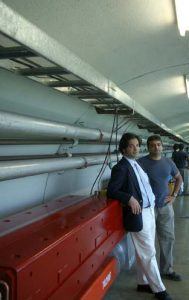Scott Bembenek in Salon:

Perhaps no other area of physics has enjoyed as much attention from scientists and non-scientists as quantum mechanics. The fame of quantum mechanics theories stands in juxtaposition to the physical “weirdness” they manifest – even some of the scientists who discovered these theories were set aback by the startling consequences. It’s no wonder Einstein remarked, “The more success the quantum theory has, the sillier it looks.” But as “silly” as it may seem, the physical implications of quantum mechanics are real, and not nearly as complicated nor inaccessible as they might seem.
Energy Comes in Chunks
We are all familiar with the way the burner of an electric stove goes from being faint red to flaming bright red as the temperature rises. If we could increase the temperature even higher, we would eventually see the burner shifting from its reddish glow to more of a bluish hue. In essence, what we are observing is a very specific relationship between the temperature of a hot object (e.g., stove burner) and the light (thermal radiation) it gives off: as the temperature increases, the light emitted from the burner shifts to a higher frequency. And although our eyes only see a particular color, it’s actually a range of colors, or a frequency spectrum, that’s emitted. This seemingly mundane physical phenomenon left twentieth-century physicists paralyzed for answers, and it would ultimately provide the very first peak into the bizarre world of quantum mechanics.
More here. [Thanks to Farrukh Azfar.]
